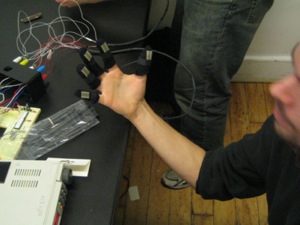Norman, Design of Everyday Things: Norman emphasized in the first chapter that well-designed objects are very easy to interpret and understand. And the principle of them is: provide a good conceptual model, and make things visible. He gave a lot examples in everyday life to prove his view. I agree with him a lot. To me, human is sensitive and adaptive, and the machine follows a series of rigid rules. So it make the interaction between human and machine difficult. (Look at how we use a programming software to debug our program. When the program went wrong, the interpret that software gives us is so different with what we think of.) So a interaction designer plays a very important role in the whole process. It's a little bit ironic that it will takes so much effort to design a product that seems so easy and simple to use.
Norman, Emotional Design, “Attractive Things Work Better”:
Pleasing things work better, are easier to learn, and produce a more harmonious result. --Norman
This is the first time I heard this kind of opinion. I'm not entirely agree with these words. For many objects, yes, they're subjective for users. Even they're all very usable, some users prefer this and others prefer that. Yes, the preferable depends upon the occasion, the context, and above all, upon my mood. However, there other designs that almost everyone likes. Like the Apple products. I don't think Apple fans don't like these products in some context or in some mood. Why many people are so obsess to Apple product is always a mystery to me, although I'm a fan too.
Igoe, Physical Computing’s Greatest Hits (and misses):
This article gives me so much inspiration. Because I have that kind of idea that many things have been done before, they're not original. This article told me that there’s a lot I can add to these themes through my variation on them. And I was worried about what to do in the P-com class final project, these themes opened my eyes to some fields that I didn't considered before.
I think the Floor Pads is a smart idea, because it's simple to make and it gives user so much fun. And these floor cubes is corresponding to salsa dance steps. However, I think there's something can be added to this project. Dancing is not all about the steps (expect Tap dance, haha). It also contains movements of other parts of the body. I think we can use a Kinect to catch users body movement, and teach users how to dance in a more comprehensive way!
I also like the Gloves project, because it's instinct for people to tapping on something with your fingers to make a rhythm. Also, a designer should make a very good rule system for users, like move your finger in this way can make this kind of music. I saw a project of my friends that is similar to the Gloves project. I think the rule system are pretty stranger for many people, and it almost ruins the user's instinct. Also, I want to find a way that users are not require to wear sensors on their hands. Maybe we can use the Leap Motion device to achieve this.


